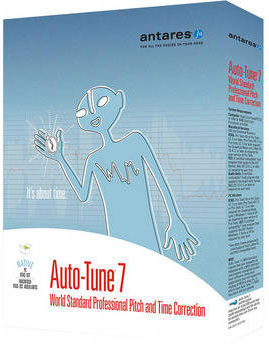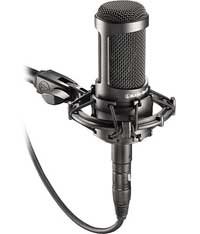Since stereo sounds so good on recorded music – we wouldn’t THINK about not creating a stereo mix for recordings – it seems like we should also try for stereo when playing live, right? Well that may or may not be true. But if you think about it, recorded music is almost always listened to when were are close to, and between both speakers – in headphones, over car speakers, on docking stations, home entertainment centers, etc. But at a live concert, there will be folks NOT between the speakers at all, so they might only be able to hear the stuff mixed into one of the L/R channels (not good).
Here’s an article that talks about the pros and cons of trying to use stereo for live sound.
Some Important Tips For Mixing Music
 There are as many tips for mixing music as there are people who mix music, but a few of these tips are common to just about anyone who has spent any significant time mixing. Joe Gilder just put out an article about the mixing lessons that were most significant to him in 2012, and not surprisingly, some of these universal mixing tips were on there.
There are as many tips for mixing music as there are people who mix music, but a few of these tips are common to just about anyone who has spent any significant time mixing. Joe Gilder just put out an article about the mixing lessons that were most significant to him in 2012, and not surprisingly, some of these universal mixing tips were on there.
One of the items on his list – the mix is slave to the recording – could be the most important lesson in his list, and was interestingly, the topic of the post I wrote yesterday – A Lack Of Passion In A Performance Can’t Be Fixed By Effects, But… which states that it is far better to get good tones, levels and performances while in the recording stage that it is to try to fix them in the mixing/editing stage.
Another of Joe’s tips is something I always, always, always (getting the idea?) do, and that is to test your mix on crappy speakers. In my case I usually do this in the car while driving around in traffic, where a good chunk of my audience will be listening to my music. The point of this is to ensure a portable mix, one that sounds good on any system it’s played on. If your mix has flaws, these crappy speakers will often highlight them better than your “good” speakers. This is doubly important if you do your mixing and mastering in a less-than-perfect acoustic space.
For the rest of the tips on Joe’s list, see his article here:
http://www.homestudiocorner.com/2012-lessons/
A Lack Of Passion In A Performance Can't Be Fixed By Effects, But…
 There’s something every recording engineer thinks about as they are tracking (recording) musicians doing their thing. That is “should I have them do it again or can I fix it in the mix?” In a perfect world, if we heard something not exactly perfect (a drummer bit off beat or a singer bit out of tune), we’d definitely have them do it again. But time and money, not to mention the attitude of the performer, are all issues that need to be considered. Luckily, there are tons of things that CAN be fixed in the mix, which is another way of saying corrected after-the-fact – usually by means of effects like compression, tempo correction and vocal tuning.
There’s something every recording engineer thinks about as they are tracking (recording) musicians doing their thing. That is “should I have them do it again or can I fix it in the mix?” In a perfect world, if we heard something not exactly perfect (a drummer bit off beat or a singer bit out of tune), we’d definitely have them do it again. But time and money, not to mention the attitude of the performer, are all issues that need to be considered. Luckily, there are tons of things that CAN be fixed in the mix, which is another way of saying corrected after-the-fact – usually by means of effects like compression, tempo correction and vocal tuning.
I read an article by Graham Cochrane this morning that basically says yes, you can fix a lot things in the mix, but passion in a performance isn’t one of them. His point is that effects plugins like a vocal tuning program can’t fix a passionless performance. You absolutely need to get that right BEFORE the mix stage. So the basic message is that effects are no help here. Graham does say that as the engineer, he can be made more comfortable knowing exactly what CAN be fixed in the mix by effects if he hears those things happen while he’s recording.
But I think there’s one thing Graham is not considering here. I believe that an understanding by the performer of what can and cannot be fixed in the mix can also free them up to be more relaxed and give a great performance. I’ve seen it over and over, especially among singers who made recordings before the prevalence of Auto-Tune. Back in the day, if a singer had a particularly challenging note, they would get very nervous before having to sing that part when recording. That tightness actually made it more difficult to get that note right. So after multiple takes, the singer would be extremely careful to hit the darned note, over-focusing on the pitch or tone and not really caring about the passion of the performance.

But then along came Auto-Tune. First, let me state that I think Auto-Tune (and other tuning programs) is way over-used in pop and country top 40 recordings. You shouldn’t just automatically snap every note to the grid the way so many producers do these days. But you can read about my thoughts on the proper use of Auto-Tune in my article – Auto-Tune – Any Tool Can Be Abused. The point is this – singers started to loosen up and worry a lot less about getting the pitch exactly right during the recording when they knew that it could be corrected in the mix! The existence of the effect plugin actually improved the quality of the performance, allowing a more relaxed and passionate delivery.
So though I agree with what Graham is saying in his article – you can’t add passion back into a flat performance with an effect plugin – I think it is worth noting that an effect plugin can make it more likely that you’ll get a passionate performance in the first place. We come full-circle:).
Here is Graham’s article: http://therecordingrevolution.com/2012/12/03/one-thing-plugins-cant-fix/
http://therecordingrevolution.com/2012/12/03/one-thing-plugins-cant-fix/http://therecordingrevolution.com/2012/12/03/one-thing-plugins-cant-fix/
Review of the Audio-Technica AT2035 Microphone (Audio Samples)
This is an excellent microphone for home recording, especially for vocals/voice-over purposes. It gives professional sounding results for only about $149. This review contains audio samples and comparisons with a more expensive mic. My Star Rating –

The Audio-Technica AT2035 is a large diaphragm condenser (LDC) microphone with a cardioid pickup pattern. (For a review of what a large diaphragm condenser mic is, see our post: What Are The Different Types of Microphones?)
The AT2035, which normally sells for $149, is an improvement on its less expensive sibling, the AT2020, which sells for $65, which is still a great value.
The capsule in the 2035 is a newer and larger design that gives a flatter response in the low (bass) frequencies and is overall more sensitive than the 2020. In fact technically, the AT2020 is not really a larger diaphragm condenser mic, even though it looks VERY similar. It’s only 16mm compared to the 24mm diaphragm in the 2035.
So What is Different?
For the extra 85 bucks or so you not only get a more sensitive mic with flatter low end and more sensitivity, but you also get a mic with less self noise, a much larger capsule, and some additional features thrown in for good measure. The 2035 gives you more control over the sound by offering two switches: a high pass filter (meaning that it reduces the low frequencies) switch at 80 Hz and a 10 dB pad, which lets you reduce the signal coming from the microphone by 10 decibels when you engage that switch. This function is pretty handy, especially if you’ve done all you can in a recording session to tame loud signals.
And that brings us to another improvement in this mic over the 2020, which is that it can handle a very loud signal (148dB of signal processing level (SPL) without the pad, or 158dB with the pad engaged) before it distorts. For a mic to be both very sensitive (can pick up very quiet sounds) and be able to handle that level of SPL is a good thing.
And finally, this mic comes with the shock mount in the box. This may seem like a small thing, but it gets very difficult to keep noise from traveling up a mic stand with sensitive mics like these if you just use a clip. A shock mount suspends the mic from a web of elastic bands, which keeps out a lot of low frequency noise. If you have ever had an LDC mic without a compatible shock mount, it gets to be a chore to find one and then order it and wait for it to come in, etc. So the fact that this mic comes with a shock mount is awesome and should be standard practice.
So How Does It Sound?
I always recommend that when they can afford it, folks get a large diaphragm condenser mic, along with a decent audio interface, if they want to produce professional audio. If you have less than $100 to spend, the AT2020 is an excellent choice. But if you can produce the extra 85 bucks, I highly recommend the 2035 because it sounds awesome.
I compared the AT to my Rode NT2-A, another LDC mic, one that I use daily. I recorded a short voice passage as well as some acoustic guitar. The first thing I noticed before anything else was that with everything else being equal (audio interface settings), the level of the AT was significantly higher than the Rode, which is saying something. That’s that sensitivity thing coming into play.
First the voice test. I just read some specs from the box for this. The 2035 sounded clear and present, very nice. Compared to the Rode (a mic costing almost 3 times more than the AT, by the way) the sound had a bit of mid-range hype to it. Take a listen to the samples below.
| Rode Voice | |
| AT Voice |
For the guitars I found exactly the same thing, a mid-range bump and less even across frequencies. Take a listen to those below.
Rode Guitar
AT Guitar
Lastly, I recorded silence (well, the sound of my room without any talking, etc.) to measure mic noise, and corrected the Rode recording for the difference in levels. There was no significant difference in noise at all. both were very quiet, registering about -65 RMS average level of amplitude. This is pretty amazing considering the price difference between these two mics.
Overall
For the things I tested it on, voice and acoustic guitar, the AT2035 sounded great. If you weren’t comparing it to a mic that cost nearly 3 times more, the bumps in the mid range wouldn’t be noticeable. My advice is to get one of these mics as your first large diaphragm condenser if you can afford the $149 and if don’t have a really good one already. To find out more of go get one right now, click here.
You cannot go wrong.
Using Auxiliary Sends For Effects In Pro Tools
I just watched another WinkSound video, this time on using auxiliary sends for effects, as opposed to just placing the effect as an “insert” on each audio track. The advantage of using sends instead of inserts is mainly efficiency. You set up a single channel strip (aux) to run the effect – say, reverb – and then you can send multiple tracks through the one reverb, saving processing power and time over having a reverb effect on 5 or 10 tracks simultaneously. They can all share the effect on the aux channel. The other advantage of send effects is that you can easily and quickly hear the dry version of all the tracks routed to the aux channel by bypassing the effect on the aux.
Most DAWs do this in a similar way.
Here is the video from WinkSound showing how to do it in Pro Tools.
